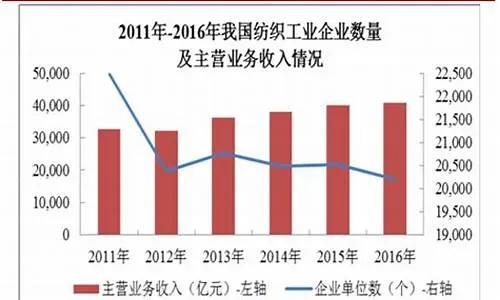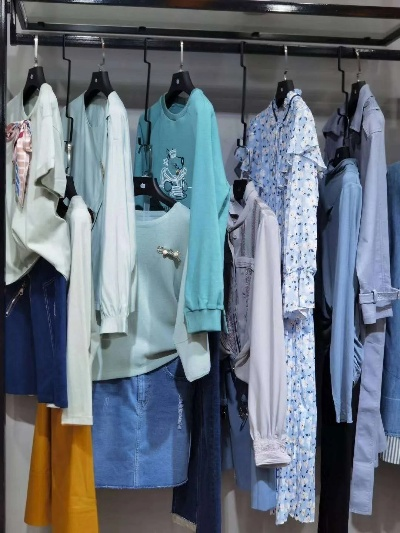The Rebound of Textile Foreign Trade
Introduction: In recent years, the global textile industry has been facing challenges due to various factors such as rising raw material costs, trade tensions, and a slowdown in consumer demand. However, signs are emerging that indicate a gradual recovery in the sector. This article will explore the current state of textile foreign trade, highlighting key indicators and success stories.
Key Indicators:
-
Export Growth Rate: According to data from the World Trade Organization (WTO), the global textile export market is witnessing a positive trend. Export growth rates have been increasing steadily since the beginning of the year, indicating an overall improvement in the industry's performance.
-
Increased Imports: As domestic production levels improve, imports into developed countries like the United States and Europe have also shown signs of recovery. This can be attributed to increased consumer confidence and a growing demand for high-quality products.

-
Improved Supply Chain Stability: The COVID-19 pandemic has highlighted the importance of supply chain resilience. Many textile companies have invested in improving their supply chain efficiency, reducing inventory levels, and ensuring better coordination between different stages of the production process.
-
Technological Advancements: Innovations in technology have played a crucial role in driving the growth of the textile industry. New materials, advanced dyeing techniques, and digital printing have enabled manufacturers to produce more sustainable and eco-friendly products, which appeal to consumers looking for green alternatives.
-
Government Policies: International agreements and policies aimed at promoting trade and investment have also contributed to the recovery of the textile industry. For example, the European Union's Single Market Agreement has helped to reduce tariffs and barriers to trade, making it easier for companies to access new markets.
Success Stories: One of the most notable examples of textile foreign trade recovery is the story of Bangladesh. Despite being one of the world's largest producers of textiles, Bangladesh faced significant challenges during the COVID-19 pandemic. However, with a focus on diversifying its economy and investing in technological innovation, Bangladesh has seen a remarkable turnaround in its textile industry.
Bangladesh has launched several initiatives aimed at enhancing its competitiveness in the global market. For instance, the country has established a number of modern factories equipped with advanced machinery and technology, allowing it to produce high-quality garments at lower costs. Additionally, Bangladesh has become a hub for the production of low-cost textiles for export to developing countries, further expanding its market reach.
Another successful case is that of Vietnam, which has made significant strides in the textile industry over the past decade. Vietnam has built a strong foundation in the garment manufacturing sector, producing a wide range of clothing items ranging from casual wear to formal attire. With a focus on quality and innovation, Vietnam is now able to compete with other major players in the industry, including China and India.
Conclusion: The textile foreign trade industry is showing signs of recovery, driven by several key factors such as improved export growth rates, increased imports, improved supply chain stability, technological advancements, and supportive government policies. While there are still challenges to overcome, the potential for continued growth in the sector remains promising. As we look towards the future, it is essential to continue investing in innovation and sustainability to ensure that the textile industry continues to thrive and contribute positively to global economic development.
随着全球经济的复苏,纺织品外贸市场逐渐回暖,本篇文章将围绕这一主题,通过案例分析、图表说明等方式,为您呈现纺织品外贸回暖的现状与趋势。
纺织品外贸回暖背景
近年来,随着国际贸易环境的改善和国内纺织行业转型升级的推进,纺织品外贸市场逐渐回暖,各国政府对纺织品的出口政策更加开放,市场需求逐渐恢复,为纺织品外贸企业提供了良好的发展机遇。
纺织品外贸回暖的表现
出口量回升
据统计数据显示,纺织品出口量在近年来呈现出稳步回升的趋势,不同国家和地区的纺织品出口量均有不同程度的增长。
贸易结构优化
随着国际贸易环境的改善,纺织品贸易结构也在不断优化,高附加值、环保、绿色等新型纺织品的出口占比逐渐提高,国际市场对高品质、高附加值产品的需求也在不断增加。
贸易合作加强
各国之间的纺织品贸易合作也在不断加强,各国政府和企业之间的合作更加紧密,贸易合作领域不断拓展,中国与欧洲国家的纺织品贸易合作日益密切,推动了双方在纺织技术、品牌等方面的交流与合作。
纺织品外贸回暖案例分析
中国纺织品出口回暖的案例分析
近年来,中国纺织品出口市场逐渐回暖,某知名纺织品出口企业通过优化生产流程、提高产品质量、拓展国际市场等方式,实现了出口量的稳步回升,该企业在贸易结构上也进行了优化,高附加值、环保、绿色等新型纺织品的出口占比逐渐提高,该企业在国际市场上也加强了与各国的贸易合作,推动了双方在纺织技术、品牌等方面的交流与合作。
欧洲纺织品出口回暖的案例分析
欧洲作为纺织品的重要出口市场之一,近年来纺织品出口市场也呈现出回暖的趋势,某欧洲国家政府出台了一系列鼓励纺织品出口的政策,为纺织品外贸企业提供了良好的发展机遇,该国家的企业与当地纺织行业协会的合作更加紧密,推动了纺织品的研发、生产、销售等方面的交流与合作,欧洲各国之间的纺织品贸易合作也在不断加强,推动了双方在纺织技术、品牌等方面的交流与合作。
纺织品外贸回暖的趋势分析
政策支持将继续加强
政策支持将继续是纺织品外贸回暖的重要推动力,各国政府将继续出台有利于纺织品出口的政策措施,为纺织品外贸企业提供更好的发展环境。
贸易合作将更加深入
贸易合作将更加深入,各国之间的纺织品贸易合作将更加紧密,贸易合作领域不断拓展,各国还将加强与新兴市场的合作,推动纺织品外贸市场的全面发展。
新型纺织品的占比将不断提高
新型纺织品的占比将不断提高,高附加值、环保、绿色等新型纺织品的出口占比将逐渐提高,成为纺织品外贸市场的主流产品,国际市场对高品质、高附加值产品的需求也将不断增加。
纺织品外贸市场逐渐回暖是一个积极的趋势,在未来,政策支持将继续加强,贸易合作将更加深入,新型纺织品的占比将不断提高,纺织品外贸企业也将抓住机遇,加强自身实力,提高产品质量和服务水平,推动自身的发展。
Articles related to the knowledge points of this article:
Top Ten Textile Brands in the rankings of textile brands
The Art of Crafting Luxurious Living with Liang Textiles



